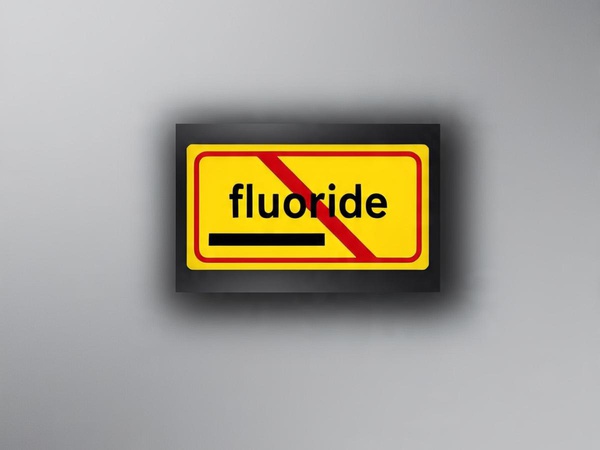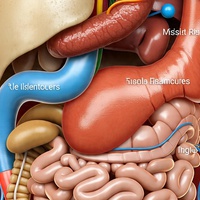Samuel Adisa
Student @ Akungba
FLUORIDE,IS IT SAFE FOR US???

<p>The Donora Smog of 1948 is a well-documented environmental disaster that occurred in Donora, a mill town in Pennsylvania, and is often associated with fluoride emissions among other pollutants. Below is a detailed history of the event The Donora Smog of 1948: A History of Fluoride Air Pollution
Overview
The Donora Smog, also known as the "Donora Death Fog," was a catastrophic air pollution event that occurred in Donora, Pennsylvania, from October 26 to October 31, 1948. This disaster, considered one of the worst air pollution incidents in U.S. history, resulted in 20 deaths and caused respiratory and other health issues for approximately 6,000–7,000 of the town’s 14,000 residents (roughly 43% of the population). It was caused by a combination of industrial emissions, particularly from the Donora Zinc Works and the American Steel Wire plant, and a meteorological phenomenon known as a temperature inversion. Fluoride emissions, especially hydrogen fluoride, were identified as a significant contributor to the health impacts. The event catalyzed the modern environmental movement and led to the development of air pollution regulations in the United States, including the Clean Air Act.
Background
Location and Industry: Donora, located 24 miles southeast of Pittsburgh along the Monongahela River, was a bustling industrial town in the 1940s. Nestled in a valley surrounded by 400-foot cliffs, its topography limited air dispersion, making it prone to pollution buildup. The town’s economy relied heavily on two major U.S. Steel Corporation facilities: the Donora Zinc Works and the American Steel Wire plant. These plants produced zinc and steel, respectively, and were known for emitting heavy pollution, including hydrogen fluoride, sulfur dioxide, carbon monoxide, nitrogen dioxide, and heavy metals within fine particulate matter.
Pollution Context: At the time, heavy pollution was a common byproduct of industrial activity and was often viewed as a sign of economic prosperity. Residents were accustomed to smog, which was associated with jobs and progress, but the 1948 event was unprecedented in its severity.
Fluoride Emissions: The Donora Zinc Works was a major source of fluoride emissions, particularly hydrogen fluoride, a colorless gas with an irritating odor produced during zinc smelting. The plant’s emissions had already caused significant environmental damage, killing nearly all vegetation within a half-mile radius and affecting crops, livestock, and property as early as the 1920s.
The Event: October 26–31, 1948
Meteorological Conditions: On October 26, 1948, a temperature inversion occurred over Donora. A layer of warm air trapped cold air in the valley, preventing the dispersion of pollutants. This stagnant air, combined with the town’s bowl-shaped topography, created a thick, toxic smog that lingered for five days. Visibility was severely reduced, with residents unable to see their hands in front of their faces in some cases.
Onset and Impact: The smog began on October 27 and worsened over the following days. Initially, residents did not perceive it as unusual; the annual Halloween parade proceeded on October 29, and the Donora Dragons played a high school football game on October 30 despite poor visibility. However, by October 30, the health impacts became undeniable.
Health Effects: The smog caused severe respiratory issues, including dyspnea (difficulty breathing), coughing, sore throats, and chest tightness. Fluoride levels in the blood of victims were found to be 12–25 times higher than normal, with autopsy results showing lethal fluorine levels in some cases. Symptoms were consistent with fluoride poisoning, which can also cause sore bones and discolored teeth.
Casualties: The first death was reported at 2 a.m. on October 30. Over the next 12 hours, 16 more deaths occurred, totaling 20 by the time the smog cleared on October 31 when rain finally dispersed the pollutants. Approximately 6,000–7,000 residents (43–50% of the population) reported illnesses, ranging from mild respiratory issues to severe asphyxiation.
Response: First responders, including doctors and firefighters, struggled to navigate the fog-laden streets. Some carried oxygen tanks door-to-door to assist residents. An emergency hospital was set up, with nurses administering oxygen to patients.
Investigation and Findings
Federal Investigation: The disaster prompted a large-scale investigation by the U.S. Public Health Service (USPHS), led by H.H. Schrenk, which included 25 investigators conducting house-to-house surveys, autopsy reviews, air monitoring, and weather analyses. Their preliminary report, released in 1949, identified three main factors:
Industrial Emissions: The Donora Zinc Works and American Steel Wire plant were primary sources, with the Zinc Works emitting hydrogen fluoride, sulfur dioxide, and other pollutants. The report also noted contributions from river traffic and residential coal-burning furnaces.
Temperature Inversion: The weather event trapped pollutants in the valley.
Topography: Donora’s valley location exacerbated the buildup of pollutants.
Fluoride’s Role: While the USPHS report attributed the disaster to a combination of factors, researchers like Dr. Devra Davis, a Donora native and environmental health expert, emphasized fluoride’s role. Autopsies showed fluorine levels in victims up to 20 times higher than normal, pointing to hydrogen fluoride as a primary cause of death. Clarence A. Mills’ 1948 study suggested that thousands more could have died if the smog had persisted.
Controversy and Cover-Up Allegations: Industrial chemical consultant Philip Sadtler, who conducted independent research at the scene, claimed the USPHS report downplayed fluoride’s role to protect U.S. Steel and other fluoride-emitting industries. He alleged that U.S. Steel conspired with the USPHS to obscure fluoride’s impact, noting that vital records from the investigation were missing from USPHS archives and that U.S. Steel blocked access to its own records. Sadtler called the incident “murder” and argued that the directors of U.S. Steel should have faced legal consequences.
Aftermath and Long-Term Effects
Health Impacts: In the decade following the smog (1948–1957), Donora exhibited higher-than-expected rates of cardiovascular disease and cancer compared to nearby Arsenal, Pennsylvania (odds ratio for cancer deaths: 1.97). This suggested long-term health effects from the smog and chronic pollution exposure. Recent studies indicate that contaminants from Donora’s industrial era may still affect the region’s environment.
Economic and Social Impact: The disaster contributed to Donora’s economic decline. The Zinc Works closed in the 1950s, followed by the steel mill in the 1960s, leading to job losses and population decline (from 14,000 in 1948 to about 4,000 today). Many residents, including the Burkhardt family, relocated to escape further pollution exposure.
Legal Actions: Residents filed lawsuits against U.S. Steel, but a class-action lawsuit by victims’ families was settled out of court, with no admission of liability. The lack of transparency fueled distrust among residents, who felt the government and industry prioritized economic interests over public health.
Legacy and Environmental Impact
Catalyst for Change: The Donora Smog is widely credited with launching the modern environmental movement in the United States. It highlighted the lethal potential of industrial pollution, prompting President Harry Truman to convene the first national air pollution conference in 1949. The disaster influenced the passage of the Clean Air Act of 1963 (strengthened in 1970), which empowered the U.S. Environmental Protection Agency to regulate hazardous airborne contaminants.
Commemoration: The Donora Smog Museum, opened in 2008 at 595 McKean Avenue, commemorates the event with the slogan “Clean Air Started Here.” A Pennsylvania Historical and Museum Commission marker was placed in 1995, and events like the 50th and 60th anniversaries in 1998 and 2008 included memorials and educational programs.
Cultural References: The disaster has been featured in documentaries like Rumor of Blue Sky (2009), books such as Donora Death Fog by Andy McPhee (2023), and media like Netflix’s The Crown (comparing it to the 1952 London Fog).
Critical Perspective
While the official narrative emphasizes a combination of pollutants and weather conditions, the role of fluoride emissions, particularly hydrogen fluoride, appears to have been underreported, possibly due to industry influence. The missing USPHS records and U.S. Steel’s refusal to release data, as noted by Sadtler, raise questions about the transparency of the investigation. The focus on fluoride is supported by autopsy evidence and the known toxicity of hydrogen fluoride, which can cause severe respiratory and systemic effects at high concentrations. However, the lack of precise emission data from the time—due to missing records—makes it challenging to quantify fluoride’s exact contribution compared to other pollutants like sulfur dioxide.
Conclusion
The Donora Smog of 1948 was a pivotal moment in environmental history, exposing the dangers of unchecked industrial pollution, particularly fluoride emissions from the Donora Zinc Works. It led to significant loss of life, widespread illness, and long-term health impacts, while also spurring the creation of air pollution regulations that transformed environmental policy in the United States. The event remains a stark reminder of the human cost of industrial progress and the importance of robust environmental oversight.Examples of Products Containing Fluoride
Toothpaste: Most toothpastes (e.g., Colgate Total, Crest Pro-Health) contain fluoride compounds like sodium fluoride or stannous fluoride (typically 1,000–1,500 ppm) ,Dental Floss,Orthodontic Products,Chewing Gum,Certain Medications (e.g., Luride),Tooth Whitening Products(e.g., Opalescence PF) etc</p><p>
</p><p>
</p><p>
</p><p><br></p><p><br></p><p><br></p><p><br></p><p>
</p>
Other insights from Samuel Adisa
Referral Earning
Points-to-Coupons
Insights for you.





 109
109































































Comments